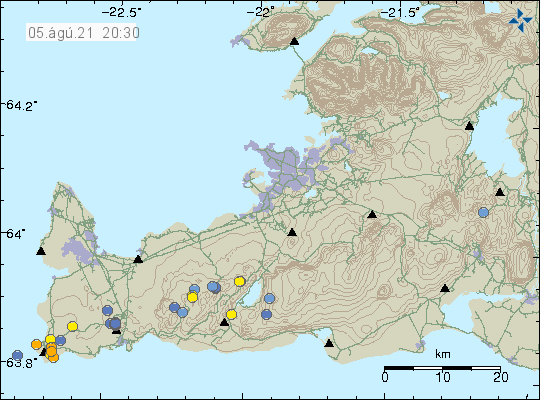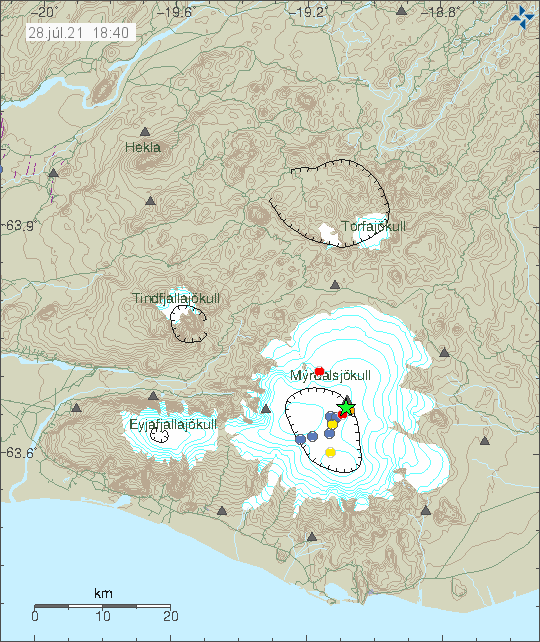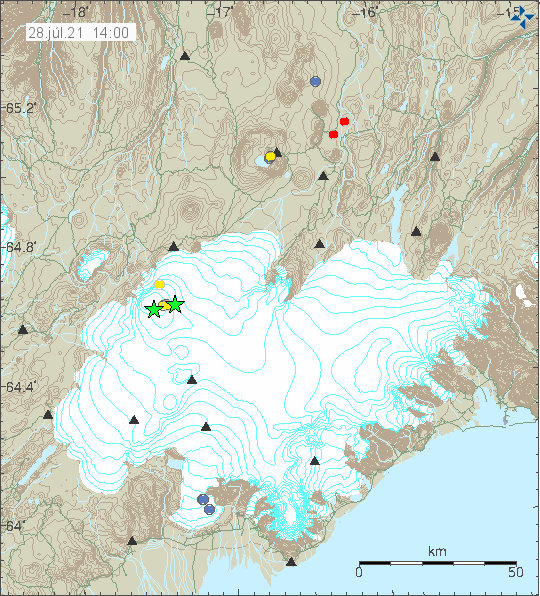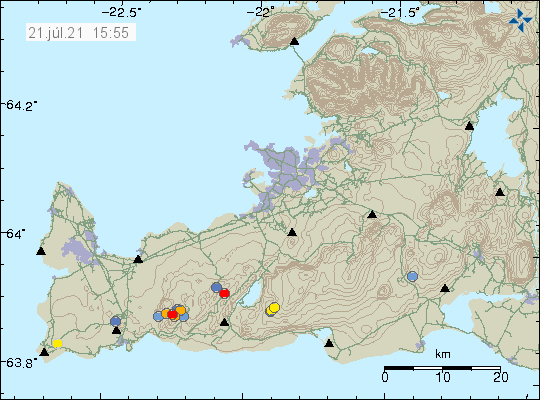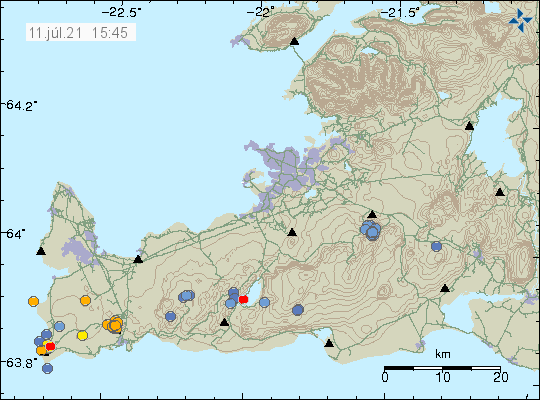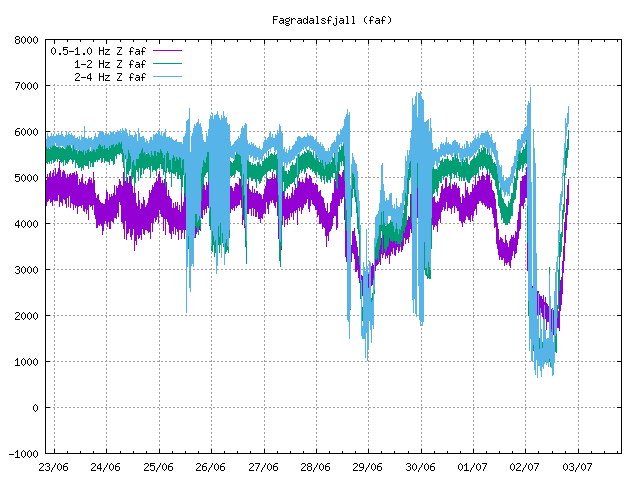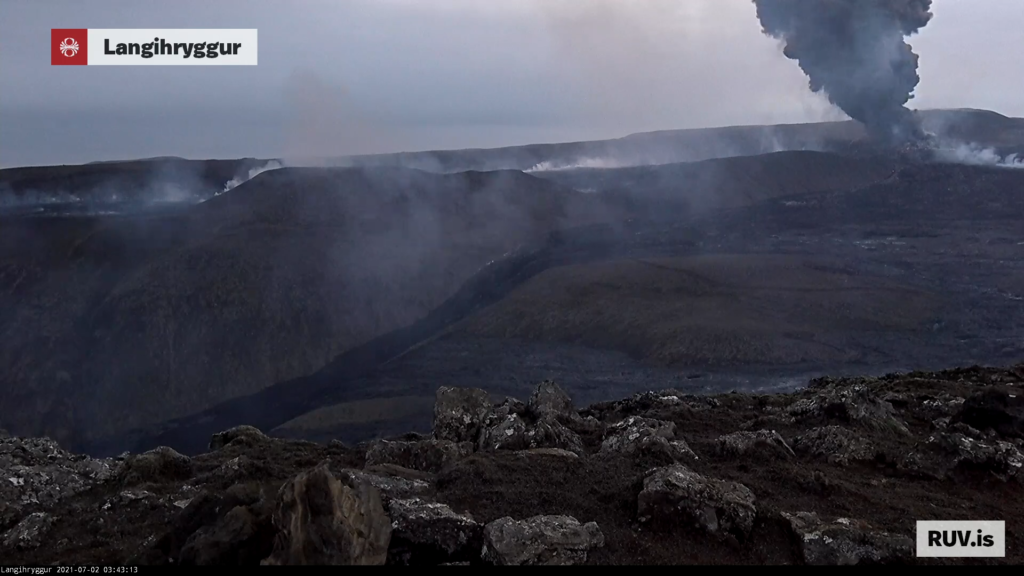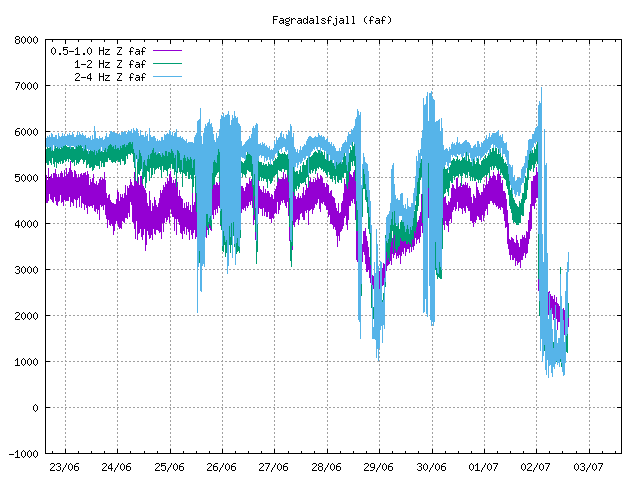This is the short update on the eruption in Fagradalsfjall mountain. That is part of Krýsuvík-Trölladyngja volcano system.
From 22-June to 29-June the eruption in Fagradalsfjall mountain changed. It started to from being stable output of magma to intermittence magma output. That phase lasted from 22-June to 29-June until around 19:30 when activity started to increase again. The magma output seems to have more than doubled based on what I am seeing on the web cameras (when not blinded by fog).
It is unclear but there might have a new crater opened up just south of the main crater. Right next to him and that location is making confirmation on this difficult. There has been splatter activity seen from that location. It is also possible that this crater has already shut down in the latest changes. I don’t know yet.
Some lava fountain activity has been seen on web cameras in the last hour. As the lava activity continues to increase. The flow of lava seems to be increasing from before and is now flowing out on all sides of the crater. That did not happen before. Activity seems to drop to almost nothing between lava flows. If this is permanent or just temporary phase of the eruption I don’t know. This might take weeks to change into stable lava flow again.
It has also been reported in the news that most of the lava flow happens underground and goes directly into the lava field where it collects into lava ponds before it goes into Meradalir, Geldingadalir (already full of lava) or Nátthagi valleys.
